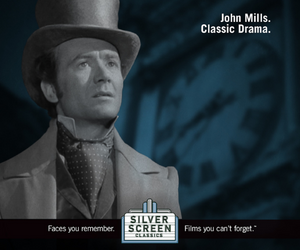TORONTO – A mini new media hearing took place yesterday at the St. Andrew’s Club and Conference Centre as delegates at Insight Information’s Entertainment Industries Summit practiced advocating their positions in preparation for the real thing when the CRTC’s new media hearing begins in February 2009.
Stakeholders from the arts community predictably called for cultural protections and funding mechanisms in any new media broadcasting legislation, while broadcasters – equally predictably – advocated an industrial strategy for new media that is separate from any arts strategy discussion.
What all delegates seemed to agree on is that a review of new media broadcasting policy is both timely and necessary, given that a new media exemption order has been in place since 1999.
Alan Sawyer, principal consultant at Two Solitudes Consulting, said the “cloud of uncertainty” regarding the future of new media regulation in Canada is not good for business. And in fact, he said, a formal new media review could potentially lead to new funding avenues for new media stakeholders once an official policy is in place – welcome news for an arts community that has seen cuts across the board under a federal Conservative government.
Canada needs more original high-quality new media content, and that requires funding, said Maureen Parker, executive director of the Writers Guild of Canada (WGC).
“It’s like any business, you have to pay for content,” Parker said. “If you want to have professional writers, professional directors, performers, producers creating high-quality programming for many different platforms, you have to pay them.”
She believes funding needs to be from a combination of public and private sources. The WGC plans to advocate for an ISP levy when it makes submissions to next year’s new media hearing.
Monique Lafontaine, general counsel and director of regulatory affairs for the Directors Guild of Canada (DGC), said the new media hearing is “top of mind” for her organization, which also will lobby for an ISP levy as part of the new media policy review.
Enforcing an ISP levy through the Broadcast Act is not legal, argued Michael Hennessy, vice-president of wireless, broadband and content policy for Telus.
“We firmly believe the CRTC does not have the powers under the Broadcast Act to levy a charge on revenues derived from common carriage from an ISP’s business, because we’re regulated under the Telecommunications Act. You can’t charge ISPs, even though they’re regulated by the CRTC under a different Act,” Hennessy said.
“If people want to try to force the tax issue on us, when we have such a strong legal leg to stand on, then we’ll take the fight to court. We’ll take the fight to the PMO and say, ‘Are you really going to allow the CRTC to impose a tax on the Internet at the very time you politicians have been cutting back on culture?’” he said.
Ian Kelso, president and CEO of Interactive Ontario, said he thinks an ISP levy in the context of new media regulation is probably a non-starter.
“From our perspective, it’s probably not workable,” Kelso said. “It’s just not politically feasible to add another tax onto a bill that most Canadians pay. It might actually have adverse effects on the entire industry.”
The DGC’s Lafontaine responded to Hennessy’s point about ISPs not being regulated by the Broadcast Act. She argued the carriage of new media content by cable and telecom companies turns them into broadcasters, and therefore it’s necessary for their role to be looked at as part of the new media broadcasting review.
As for an expected push for Canadian content rules to be applied in the new media environment as well, one delegate at the Entertainment Industries Summit said history has shown Cancon rules have contributed favourably to the health of Canadian culture.
Canadian music industry pioneer Bernie Finkelstein said: “The single greatest regulation ever done was the CRTC’s decision to regulate radio with 30% Canadian content in 1970-71. We’ve seen the Canadian music business boom, notwithstanding its current difficulties which are shared worldwide.
“But when I started, you could count the Canadian stars on one hand. And today we could talk about them for hours and hours and not repeat ourselves. There’s no greater evidence of [Cancon rules’] success,” said Finkelstein, who is the current chair of the Canadian Independent Record Production Association (CIRPA).
Finkelstein said his organization does not have a fixed opinion on the new media policy review coming next year. “As you well may imagine, our membership has some people who feel very hawkish about the idea of having regulation. Some people feel there should be no regulation whatsoever, period, in the digital world at all. And we’re trying to get some kind of consensus,” Finkelstein said. “We welcome the fact that there will be a new hearing in light of the new realities.”
One traditional broadcaster voiced his concerns about the upcoming new media hearings, saying he thinks Canada is just at the beginning of a digital transition and many industry stakeholders are still trying to figure out new media content and business opportunities.
“I think we spend a lot of time making policy in Canada because we’re afraid of what the future is, and then we make decisions that we can’t undo at the end of the day,” said David Goldstein, senior vice-president of regulatory affairs for CTVglobemedia Inc.
“I worry that we’re going to make decisions in this phase (of broadcast industry development) that will let certain genies out of the bottle that we can’t get back in.”
Linda Stuart is a Toronto-based freelance writer and editor.


